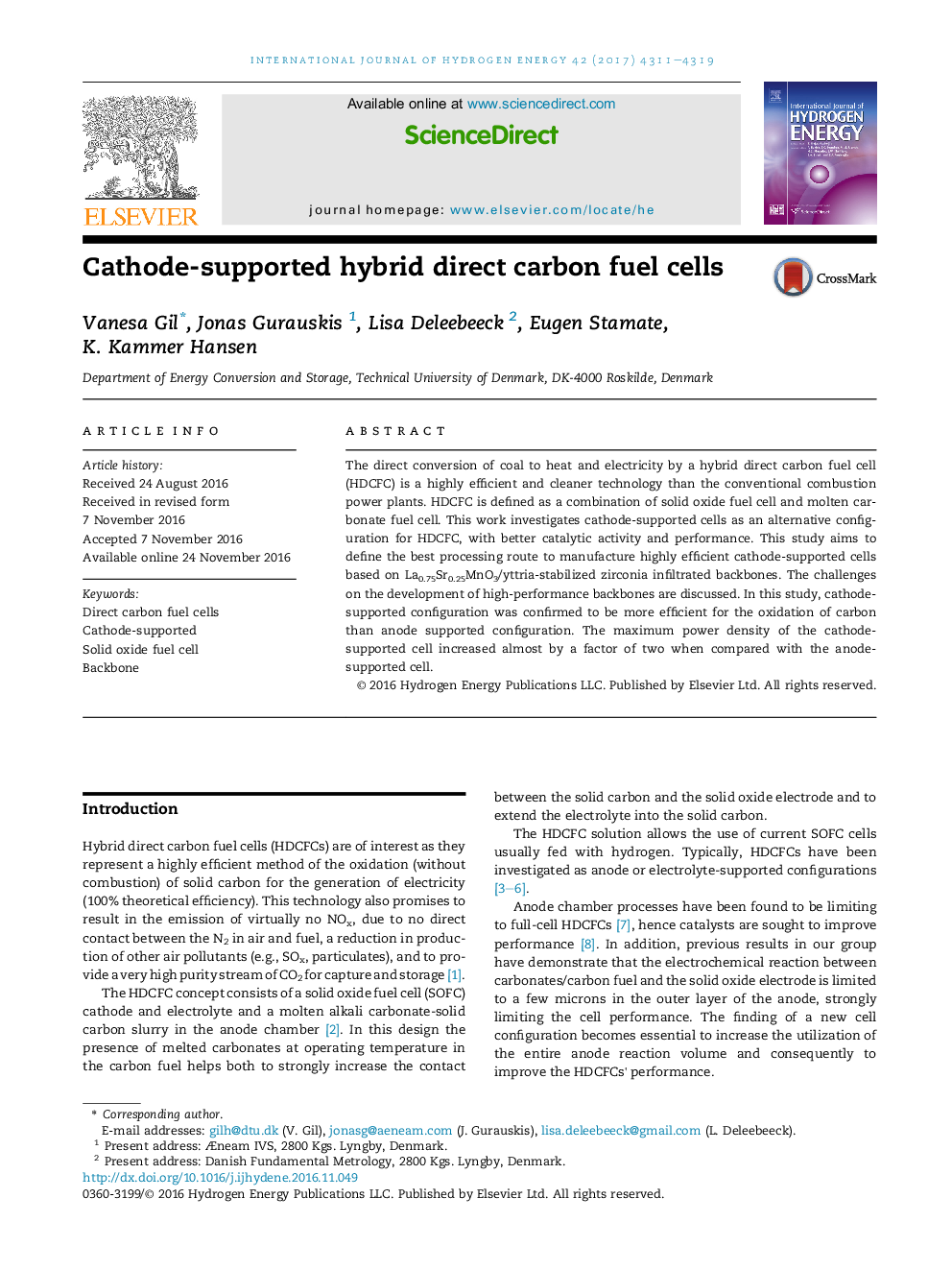| Article ID | Journal | Published Year | Pages | File Type |
|---|---|---|---|---|
| 5146351 | International Journal of Hydrogen Energy | 2017 | 9 Pages |
•Porous interlayer backbones as a tool in the development of cathode-supported cells.•Cathode-supported full cells with no secondary phases were achieved at 1250 °C.•Direct carbon fuel cells present the highest performance when cathode-supported.
The direct conversion of coal to heat and electricity by a hybrid direct carbon fuel cell (HDCFC) is a highly efficient and cleaner technology than the conventional combustion power plants. HDCFC is defined as a combination of solid oxide fuel cell and molten carbonate fuel cell. This work investigates cathode-supported cells as an alternative configuration for HDCFC, with better catalytic activity and performance. This study aims to define the best processing route to manufacture highly efficient cathode-supported cells based on La0.75Sr0.25MnO3/yttria-stabilized zirconia infiltrated backbones. The challenges on the development of high-performance backbones are discussed. In this study, cathode-supported configuration was confirmed to be more efficient for the oxidation of carbon than anode supported configuration. The maximum power density of the cathode-supported cell increased almost by a factor of two when compared with the anode-supported cell.
